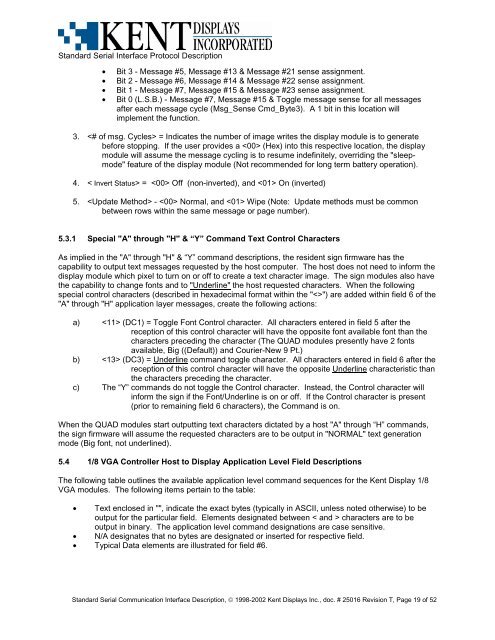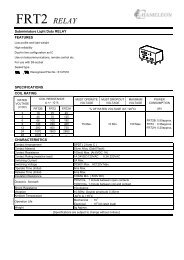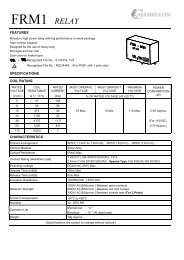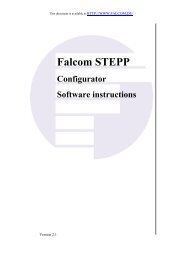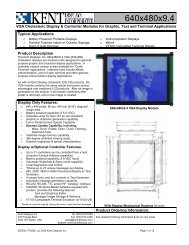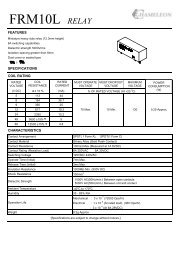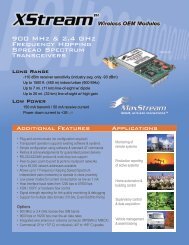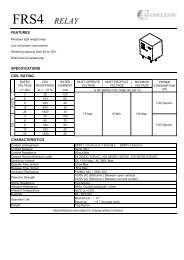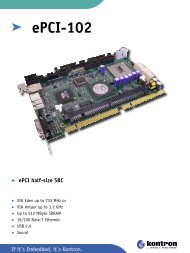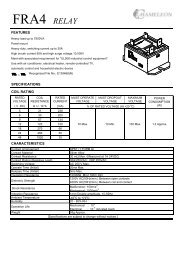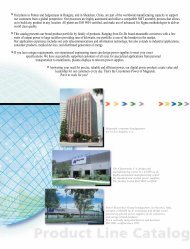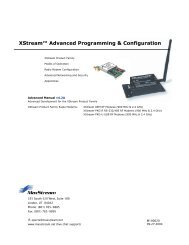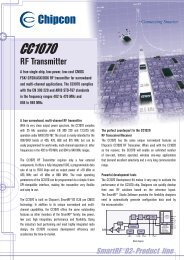STANDARD SERIAL COMMUNICATION INTERFACE and ...
STANDARD SERIAL COMMUNICATION INTERFACE and ...
STANDARD SERIAL COMMUNICATION INTERFACE and ...
You also want an ePaper? Increase the reach of your titles
YUMPU automatically turns print PDFs into web optimized ePapers that Google loves.
St<strong>and</strong>ard Serial Interface Protocol Description<br />
• Bit 3 - Message #5, Message #13 & Message #21 sense assignment.<br />
• Bit 2 - Message #6, Message #14 & Message #22 sense assignment.<br />
• Bit 1 - Message #7, Message #15 & Message #23 sense assignment.<br />
• Bit 0 (L.S.B.) - Message #7, Message #15 & Toggle message sense for all messages<br />
after each message cycle (Msg_Sense Cmd_Byte3). A 1 bit in this location will<br />
implement the function.<br />
3. = Indicates the number of image writes the display module is to generate<br />
before stopping. If the user provides a (Hex) into this respective location, the display<br />
module will assume the message cycling is to resume indefinitely, overriding the "sleepmode"<br />
feature of the display module (Not recommended for long term battery operation).<br />
4. < Invert Status> = Off (non-inverted), <strong>and</strong> On (inverted)<br />
5. - Normal, <strong>and</strong> Wipe (Note: Update methods must be common<br />
between rows within the same message or page number).<br />
5.3.1 Special "A" through "H" & “Y” Comm<strong>and</strong> Text Control Characters<br />
As implied in the "A" through "H" & “Y” comm<strong>and</strong> descriptions, the resident sign firmware has the<br />
capability to output text messages requested by the host computer. The host does not need to inform the<br />
display module which pixel to turn on or off to create a text character image. The sign modules also have<br />
the capability to change fonts <strong>and</strong> to "Underline" the host requested characters. When the following<br />
special control characters (described in hexadecimal format within the "") are added within field 6 of the<br />
"A" through "H" application layer messages, create the following actions:<br />
a) (DC1) = Toggle Font Control character. All characters entered in field 5 after the<br />
reception of this control character will have the opposite font available font than the<br />
characters preceding the character (The QUAD modules presently have 2 fonts<br />
available, Big ((Default)) <strong>and</strong> Courier-New 9 Pt.)<br />
b) (DC3) = Underline comm<strong>and</strong> toggle character. All characters entered in field 6 after the<br />
reception of this control character will have the opposite Underline characteristic than<br />
the characters preceding the character.<br />
c) The “Y” comm<strong>and</strong>s do not toggle the Control character. Instead, the Control character will<br />
inform the sign if the Font/Underline is on or off. If the Control character is present<br />
(prior to remaining field 6 characters), the Comm<strong>and</strong> is on.<br />
When the QUAD modules start outputting text characters dictated by a host "A" through “H” comm<strong>and</strong>s,<br />
the sign firmware will assume the requested characters are to be output in "NORMAL" text generation<br />
mode (Big font, not underlined).<br />
5.4 1/8 VGA Controller Host to Display Application Level Field Descriptions<br />
The following table outlines the available application level comm<strong>and</strong> sequences for the Kent Display 1/8<br />
VGA modules. The following items pertain to the table:<br />
• Text enclosed in "", indicate the exact bytes (typically in ASCII, unless noted otherwise) to be<br />
output for the particular field. Elements designated between < <strong>and</strong> > characters are to be<br />
output in binary. The application level comm<strong>and</strong> designations are case sensitive.<br />
• N/A designates that no bytes are designated or inserted for respective field.<br />
• Typical Data elements are illustrated for field #6.<br />
St<strong>and</strong>ard Serial Communication Interface Description, © 1998-2002 Kent Displays Inc., doc. # 25016 Revision T, Page 19 of 52


